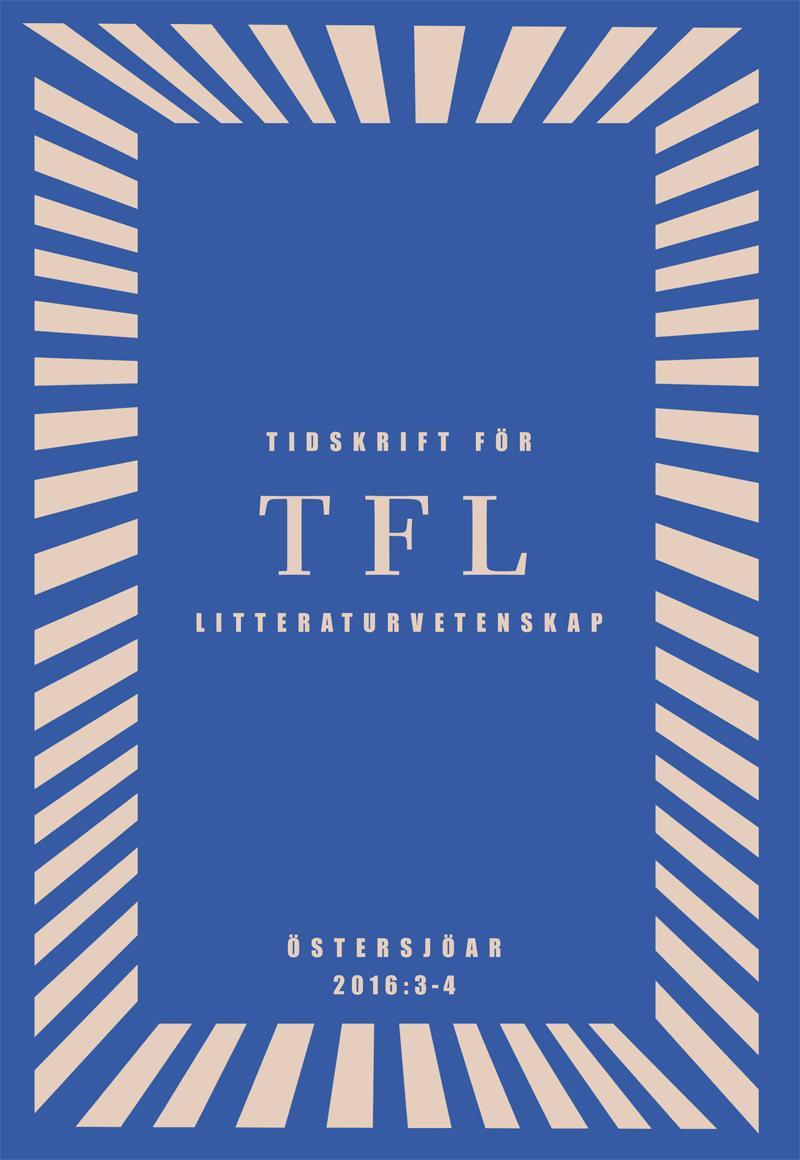À Propos Rosa Luxemburg
Nordiske modernister tolker revolutionens og avantgardens grænser
DOI:
https://doi.org/10.54797/tfl.v46i3-4.8731Nyckelord:
Rosa Luxemburg, Emil Bønnelycke, Hagar Olsson, Avant-garde, Nordic Modernism, Centre and Periphery, Gender, Violence, RevolutionAbstract
Apropos Rosa Luxemburg: Nordic Modernists Negotiate the Borders of Revolution and the Avant-Garde
Staging oneself as an avant-garde or modernist writer during the inter-war period involved precarious negotiations between national, regional (in this case the Nordic) and international roles and positions, and involved questions of import and influence. But these questions were also influenced by the notion that avant-garde art and aesthetics depended on violence, a violence which was more often than not encoded as masculine. For this reason, literary images of the female revolutionary are particularly revealing in terms of the issues and ideas at stake. This article presents two interpretations of Rosa Luxemburg by Emil Bønnelycke and Hagar Olsson as part of a larger pattern concerning the dynamics between cultural centers and peripheries, as well as the connection between avant-garde aesthetics and violence.
When Emil Bønnelycke first read his Rosa Luxemburg. Prosalyrisk Symphoni pathêtique in memoriam in February 1919, he shocked and excited the audience by drawing a revolver and firing it at the ceiling at the moment of Luxemburg’s death. Interestingly enough, Bønnelycke’s Luxemburg is represented in two ways: one is the weak woman who is entirely directed towards the masculine power and hatred which she finds embodied in Liebknecht. The other Luxemburg is presented in stylized passages that function as a leitmotiv in the short work. Here she is a young girl with a child’s holy passion and an, as of yet, passive defiance against the evils she has witnessed. The figure of Luxemburg is de-eroticized in both versions; but whereas the middle-aged woman painfully exhibits her impotence; the young girl is invested with a power of resistance, which is nonetheless non-acute. This appears to be Bønnelycke’s way of restoring gender roles without completely disarming the energy of revolution which he needed in order to be able to represent the ”European panic” in Denmark, under relatively safe conditions.
In the inter-war period, Hagar Olsson paradoxically interpreted Finland as a neutral Nordic country, out of contact with the war and revolutions of Europe. Instead, she was inspired by her experiences of the communist uprising in Estonia 1924, publishing her own translation of an Estonian poem dedicated to Luxemburg by a young communist poet, Ida Meerits. The context was an article from 1925 dedicated to a new type of poet— the singing revolutionary. Olsson singled out the word flyttfåglar (”migratory birds”) from the poem, using it to reflect on the borders between art and revolution, a theme which she developed in other articles as well. She wrote that, in their internationalism, the new, engaged poets were like migratory birds. Her discussions concerned the violence of revolution and avant-garde geography as a power play between dominating and dominated literatures. The figure of the revolutionary woman in Olsson’s dramas— S.O.S. (1928) and Det blåa undret (The Blue Wonder, 1932), and in the photo- novel På Kanaanexpressen (On the Canaan Express, 1929)— further highlights the complex ways in which Olsson interwove the problem of violence, the import of avant-garde aesthetics, and gender in her inter-war work.
Nedladdningar
Downloads
Publicerad
Referera så här
Nummer
Sektion
Licens
Författaren/författarna behåller copyright till verket






